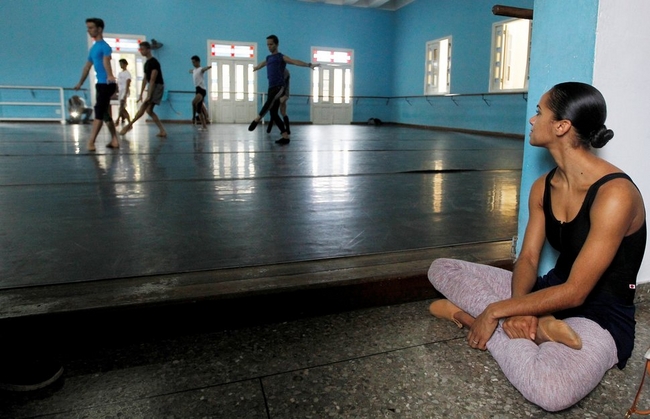Misty Copeland Visits Cuba, Where Brown Ballerinas Are The Norm
Huffington Post | Friday, 30 December 2016 | Click here for original article

“It’s just like, no, ballet is being done everywhere in the world. And it’s been done for a long time.”
American Ballet Theatre’s principal dancer and bona fide queen Misty Copeland visited Havana, Cuba, recently to dance with professional dancers from the Ballet Nacional de Cuba.
One of her most striking first impressions, on a purely physical level, was the quantity of ballerinas of color in her midst.
For Copeland, the first black woman to become principal dancer at the American Ballet Theatre, the fight for diversity in the world of ballet has been vital and ongoing. So just to step into a dance studio where brown ballerinas were not the outliers was a powerful sight in itself.
“There’s this stigma in classical ballet that brown people don’t belong,” Copeland said in a video interview with The Undefeated. “But coming here to Cuba, it’s such a beautiful thing to know the long history of classical dance here, and to see the diversity. And it’s kind of like proving all of those people wrong. It’s just like, no, ballet is being done everywhere in the world. And it’s been done for a long time. And so to exclude one race, or because you look a certain way, I think is so wrong.”
In America, most professional ballet companies stem from the classical European tradition ― a tradition that is very, very white. As a result, the bodies and individuals that diverge are often excluded from the ballet scene, in ways both explicit and more insidious, for reasons that have nothing to do with their talent and skill.
For Copeland, the racial discrimination embedded in ballet culture is fundamentally opposed to what makes dance so unique ― its ability to transcend borders and differences through the universal power of music and movement. “I think that sports and art and dance, it unifies people,” Copeland said. “And it’s a language and a culture that people from everywhere, all over the world, can relate to and understand and come together for.”
Copeland was also impressed during her travels by how much dance was weaved into Cuban culture. As the ballerina put it, “it’s in the blood.” This was perhaps most embodied in Cuba’s education system, which privileges the importance of creative learning. “The fact that they understand the benefits of the arts, I think that the states could learn from that,” Copeland said. “That it really helps to create a whole person.”
At only 34 years old, Copeland has changed the game for ballerinas of color, her every exquisitely graceful movement quietly trampling the archaic view that ballet belongs to a certain kind of body, a certain color of skin. Copeland herself, however, is the first to declare her work isn’t done yet. “I don’t think racism is something that will ever completely go away,” she said.
“I think the conversation of diversity in dance is always going to be an issue and I just hope as long as I’m alive I’m continuing to keep that conversation open and to push the boundaries and to give minorities opportunities.”






